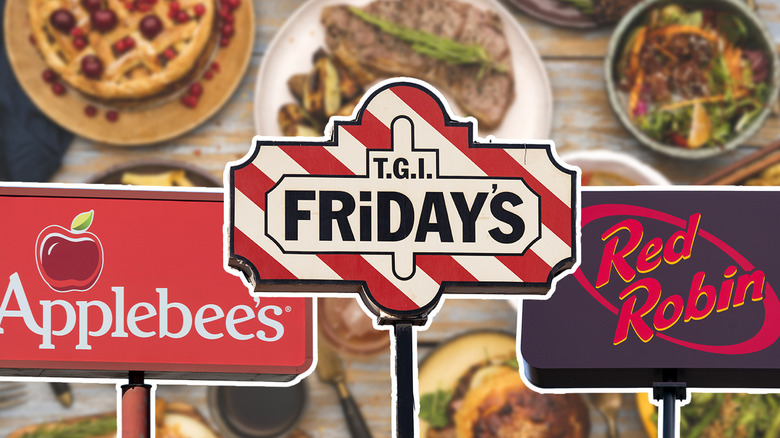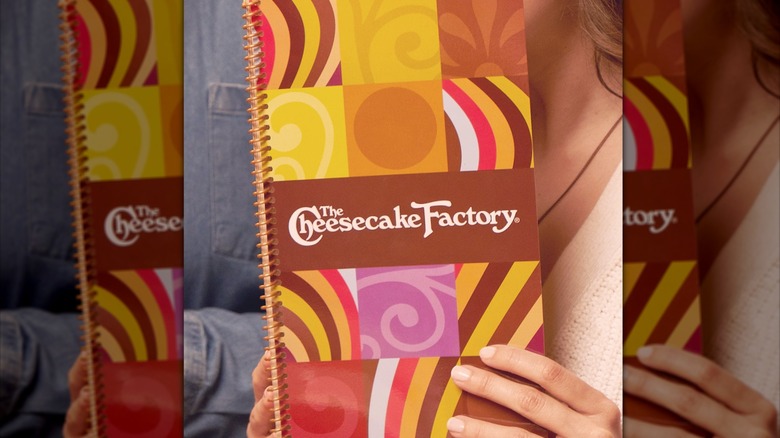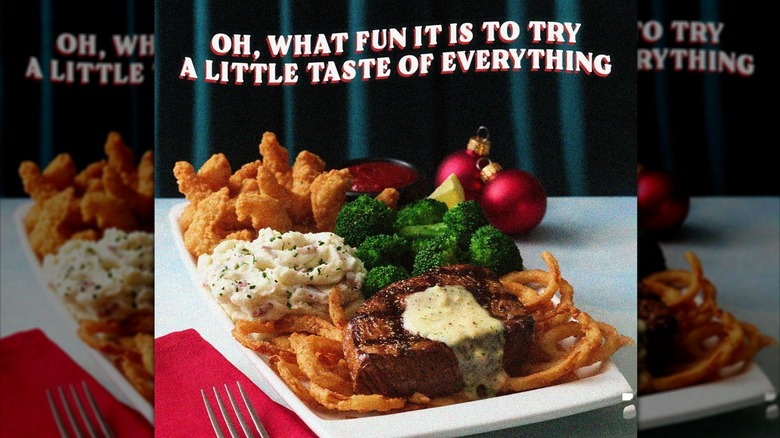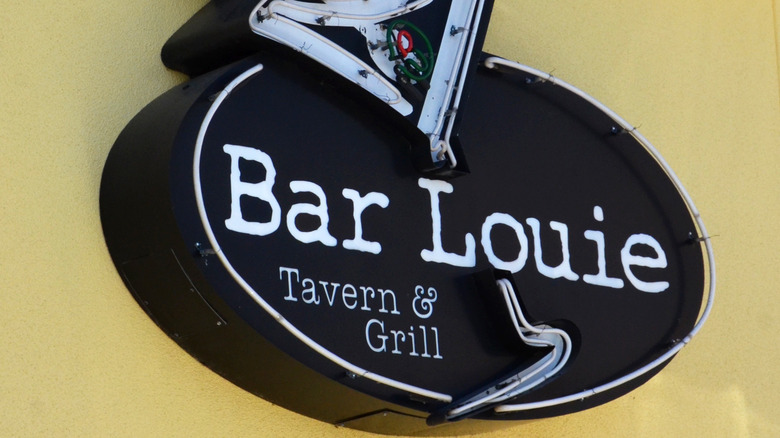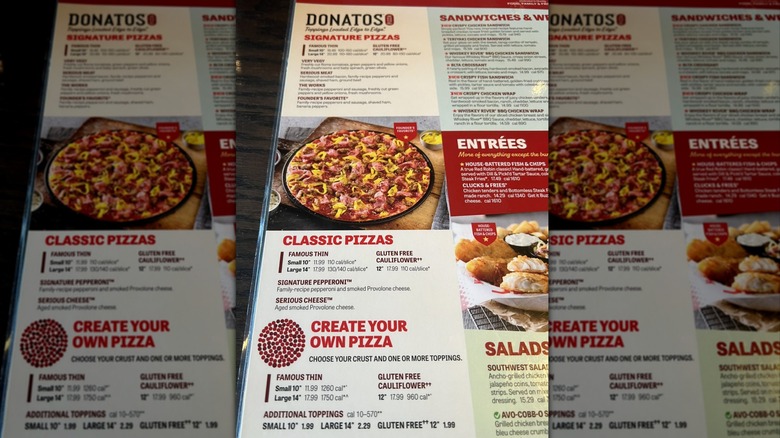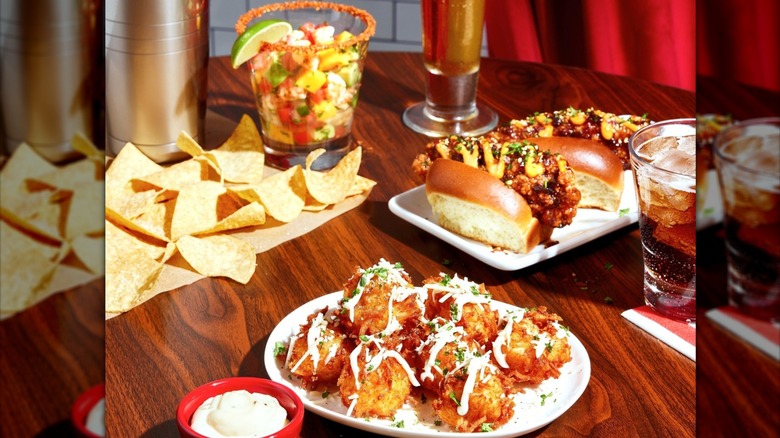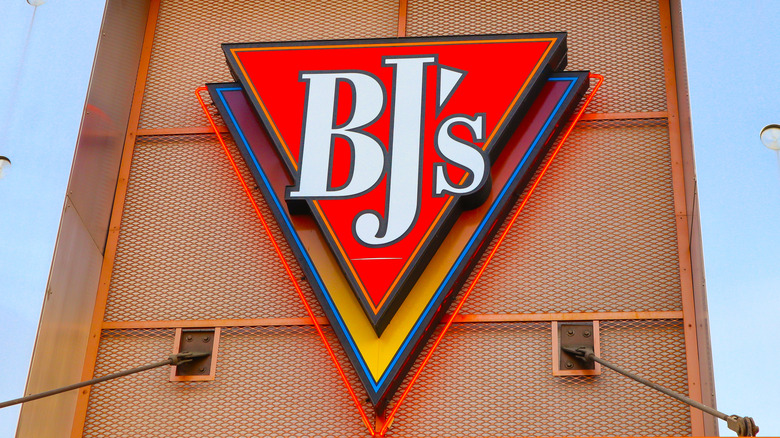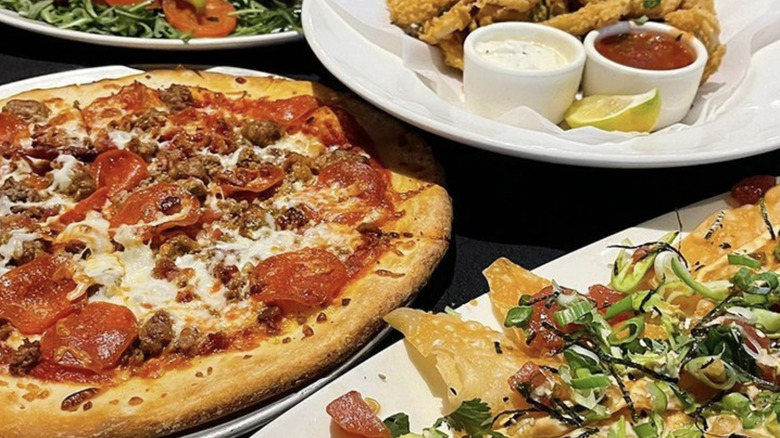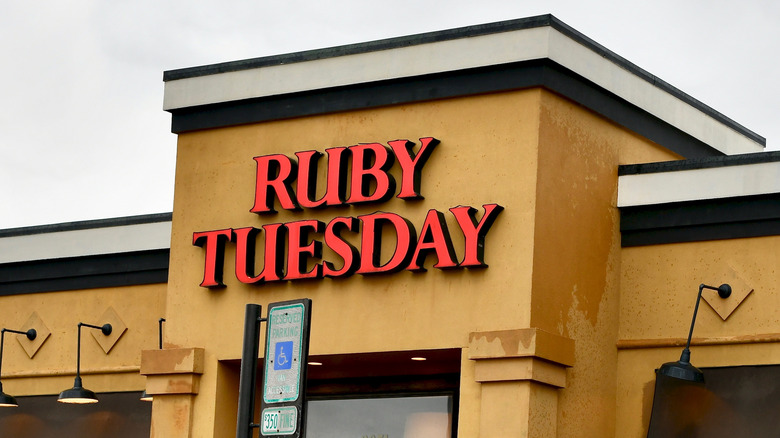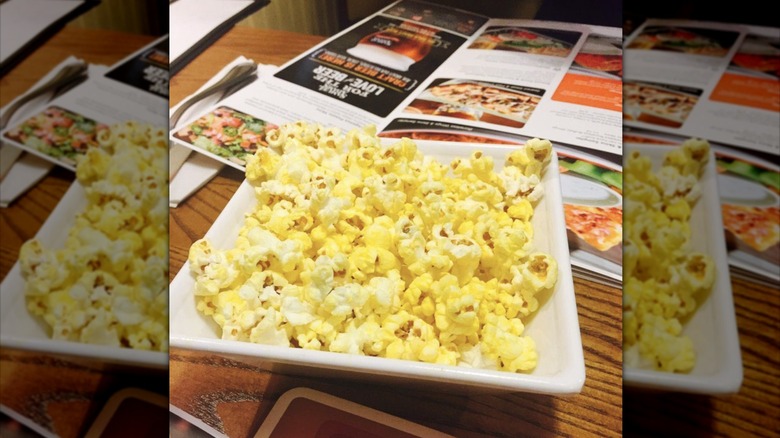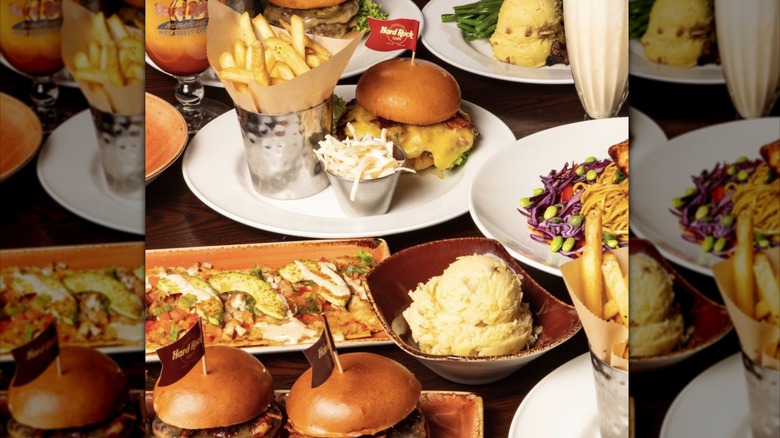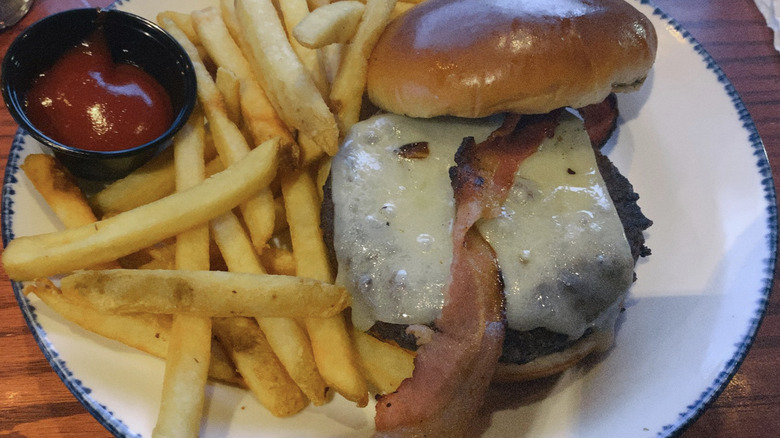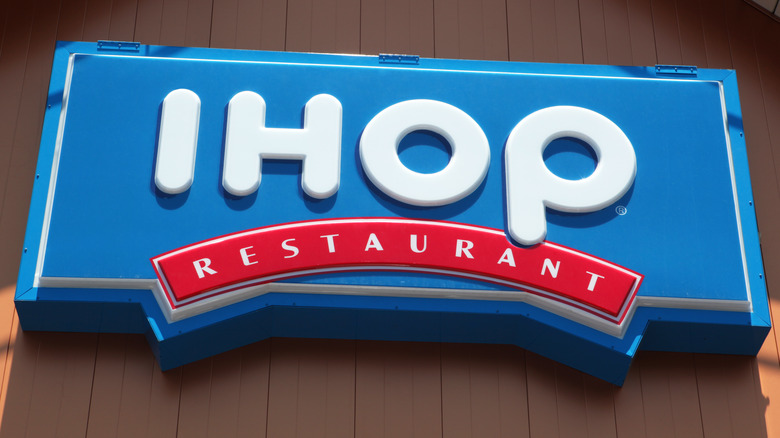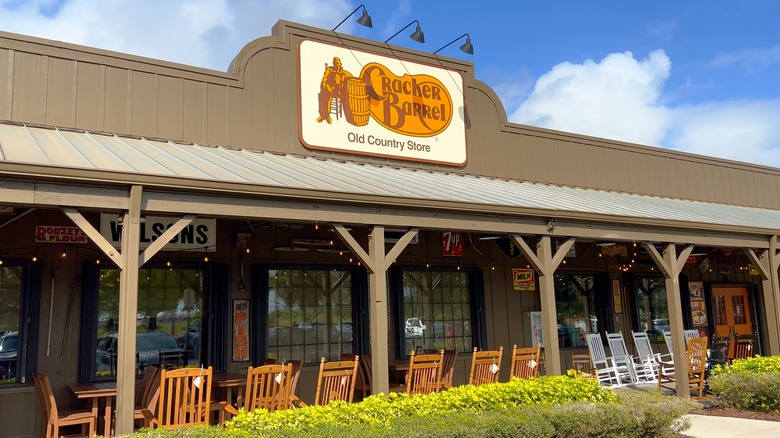Restaurant Chains That Have Too Many Menu Options
Multi-page menus were standard practice in restaurants for decades. When family restaurant chains took America by storm in the '80s and '90s, they too embraced hefty menu books, filled with items aimed to appease even the fussiest eaters. Part of what makes going out to eat fun is being able to order something different from others at the table, but when there are too many options, it might start to feel like you're ordering from completely different restaurants.
This doesn't seem like that big of a deal — and in the grand scheme of things, it's not — but a restaurant with a too-long menu is often a sign that the quality of your meal will be average at best. Many sit-down eateries have traded lengthy menus for a more streamlined single page. However, the restaurants on this list decide to offer everything but the kitchen sink. In an attempt to please everybody, these casual chains lose one of the most important things a restaurant can have — a point of view.
Rather than perfect a cohesive selection of menu options, many of these chains churn out everything from pizza to tacos, to Asian-inspired dishes, barbecued meats, and pub food. All too often, this hodgepodge of okay-ness utilizes a lot of frozen ingredients that don't take much skill to prepare. Then there's the chains that don't revamp their menus frequently enough, carrying sides or entire menu sections that are unpopular or outdated. Here are the restaurant chains most in need of some serious menu editing.
The Cheesecake Factory
It's an obvious one. If you've ever held the spiral notebook that The Cheesecake Factory calls a menu, you've probably wondered how everything on it stays fresh. Considering that The Cheesecake Factory's price points are higher than other family-friendly chains, resorting to a freezer full of pre-made appetizers seems like a morally questionable path. So what's the deal?
The Cheesecake Factory addresses the skepticism on the company website, explaining, "With more than 250 items on our menu, it may be hard to believe that we make things fresh and from scratch in each restaurant – but it's true! Our prep kitchens are one of the busiest spots in our restaurants, and it's where the magic begins every day." Those who have worked at The Cheesecake Factory point out that although the menu options are immense, many of the same ingredients are utilized throughout.
Keeping the ingredients list shorter than the menu cuts reduces inventory and potential food waste. Since The Cheesecake Factory purposely shirks the pared-down menu trend, its kitchens operate like a full-scale labyrinth of chef stations, with each station being responsible for roughly 30 dishes. For a restaurant chain that proudly professes to have a scratch kitchen, it's surprising to learn that the one menu item that always comes frozen is the chain's signature cheesecake.
Applebee's Grill + Bar
The Applebee's Grill + Bar menu is basically an existential crisis in print. It doesn't know who it wants to be, where it's headed, or how it got here. Applebee's has been around since 1980, and somewhere along the line, it started doing way too many things at once. The misguided menu is not helping business. In May 2024, Applebee's announced that up to 35 U.S. locations will be closing this year.
Applebee's has some plans for reinvention in the works, and we're curious to see if downsizing the menu is one of them. Between the appetizers to the many entrée categories, Applebee's menu offers such items as Chicken Wonton Tacos, breadsticks with Alfredo sauce, a Tex-Mex Shrimp Bowl, Fish & Chips, and Bourbon Street Steak. Applebee's off-kilter attempts at being a pub, cantina, steakhouse, and trattoria all at once, means sacrificing the chance to have a specialty.
It's not much of a shock that many of Applebee's menu items are frozen, but it is a little unnerving to learn from former Applebee's employees that many of these items are heated up for customers in the microwave. The chicken comes pre-cooked. The broccoli is frozen and then microwaved. When the bar for food quality and preparation is this low, you're probably better off going elsewhere.
Bar Louie
Any restaurant describing its food as "American" gives itself a wide berth for culinary interpretation. It's also how many menus lose clarity and focus, which is exactly what happens with Bar Louie, "The Original Gastrobar" turned chain restaurant that opened in Chicago in 1990. Bar Louie promotes an American menu packed with international flavors and references. Then again, America is the ultimate melting pot, right?
Potato chips drizzled with buffalo sauce and blue cheese, calamari with Japanese seasoning and sweet Thai chili sauce, Bavarian pretzels, and fried cheese curds all share space on the Bar Bites menu. This quirky assortment is part of a menu section already cluttered with the likes of french fries, quesadillas, fried pickles, and three types of sliders. Entrée sections of sandwiches, burgers, and main plates stay truer to the American gastropub theme, but the inclusion of flatbreads borders on exorbitant.
We aren't saying Bar Louie's flatbreads taste bad, but it's a classic example of a chain that can't resist having a hand in everything. These flatbreads are a few dough stretches away from being pizza. Maybe they should think about trimming down the menu to highlight the bestsellers.
Red Robin
You know you've entered the land of confusion when there is a menu section dedicated to an entirely different restaurant. Such is the case at family-favorite Red Robin. Before Red Robin became a chain with over 500 restaurants across the U.S. and British Columbia, it was a Seattle-based burger joint established in 1969. If burgers and fries are Red Robin's calling card, then why is there an entire menu section called Donatos Pizza?
According to Red Robin's menu, Donatos Pizza has been "America's Favorite Pizza Since 1963" (try spreading that message in the Northeast), and as such, Red Robin feels a personal responsibility to sell this pizza at select locations of its restaurant. We hate to burst your bubble Red Robin, but this all seems pretty strange. And it isn't the only part of the menu that's a head-scratcher.
Red Robin's appetizer section is a mish-mash of oddities — you'll also find a Donatos pepperoni pizza here — but this is usually the most misaligned area of a casual sit-down menu. There is also an enormous selection of flavored soda on Red Robin's bottomless menu, including a line of cream sodas with whipped cream (for those who live on the edge). Red Robin mostly holds the spotlight on its signature burgers and fries, but gets tripped up by some distractions along the way.
TGI Friday's
TGI Friday's was one of America's premiere singles bars when the flagship location opened in the Upper East Side of Manhattan in 1965. As one of the first casual chains to popularize happy hour culture, TGI Friday's lived up to its name and expanded worldwide. However, what felt contemporary 25 years ago has grown stale, as TGI Friday's struggles to streamline its menu and attract the post-work crowd.
All the typical family-chain appetizers are present in the TGI Friday's menu: mozzarella sticks, spinach artichoke dip, wings. Margarita Shrimp Cocktail — a new addition — seems like a half-hearted attempt at ceviche while the inclusion of pan-seared potstickers with pork feels random ... because it is. In the Entrées section, Fish & Chips are listed alongside a Chicken Al Pastor Bowl that languishes beside two different versions of garlic-marinated chicken breast served on a bed of sizzling cheese.
TGI Friday's does not have as vast a menu as some competitors, but the items it does serve clash wildly. The company announced it will be closing 36 U.S. locations in 2024, so it seems like the right time to revise the menu.
BJ's Restaurant and Brewhouse
In 1978, BJ's Restaurant and Brewhouse made a name for itself in Santa Ana, California, by making Chicago-style deep dish pizzas with a sprinkling of fresh toppings. West Coast diners were into it, and BJ's began to grow outside its native state, amassing to a current total of 216 locations. BJ's Restaurant and Brewhouse boasts 140 items on its menu, and similar to The Cheesecake Factory, has tried to make its elaborate menu one of its draws.
You'll still have an opportunity to gorge on BJ's famous pizza, but if you're in the mood for something different, there's more than you can imagine at your disposal. Luckily, many of the menu items repeat ingredients, which makes it easier for a menu this gargantuan to keep everything stocked and (hopefully) in demand. The menu is a lot to take in, yet the glaring disappointment throughout is that the food options cast too wide a net in terms of cuisine. Instead of offering anything anyone could possibly want, BJ's would probably benefit from narrowing down the choices and executing less food consistently well.
Yard House
Big and lively are two notable characteristics of Yard House, a casual American chain founded in 1996 in Long Beach, California by controversial former CEO Steele Platt. The eatery is known for carrying over 100 draft beers and carefully curating its classic rock playlists. However, the massive food menu could use a little curating as well.
With much of Yard House's focus going to its mammoth draft library, reining in the food options would be a nice counterpoint. Instead, Yard House features around 80 items on its food menu, and it comes across as chaotic. The Pan-Asian, bar bite mash-up in the appetizer section is a concept we can get behind. There are a lot of items, a few of which Yard House could probably shake loose, but nothing listed there is totally out of left field. An assortment of burgers, sandwiches, and tacos follow — the cohesion becomes shaky, but mostly intact. And then there's pizza.
Seeing the "Tacos" section juxtaposed with "Pizza" signals that you're eating food from a kitchen that's being flung in too many directions. Why does Yard House feel it has to sell pizza? By the time we encounter the steak, chicken, seafood, and salad sections toward the end of the menu, it's impossible to keep up, let alone keep our attention.
Ruby Tuesday
Once a force of the casual family restaurant circuit, Ruby Tuesday has struggled to stay relevant in recent years. At its height, Ruby Tuesday boasted 840 locations, but today there are only around 227 locations. An overcomplicated menu is partly to blame for Ruby Tuesday's well-documented instability.
An unlimited salad bar, burgers, sandwiches, and platters of ribs and crispy shrimp were the kinds of food behind Ruby Tuesday's initial success. Rather than perfect these dishes or come up with ways to modernize them, the restaurant felt pressured to add trendier, more upscale foods to the menu — and the number of menu items got out of hand.
In the appetizer section, pub fare like loaded potato skins and mozzarella sticks mingle with coconut shrimp and fried mushrooms. Deconstructed Kabobs and a Steak Tacodilla are odd and ill-fitting in the Ribs & Steaks section. Crispy Chicken Mac 'n Cheese topped with marinara and served with a breadstick just sounds confusing and is barely discernible from the Chicken Pasta Marinara a few items over.
The real trouble is, Ruby Tuesday has thrown everything into a menu that winds up being totally unremarkable. Many of Ruby Tuesday's competitors (and there are many), do fast casual Italian or Southwestern-inspired dishes better. If Ruby Tuesday really wants to elevate its menu, it could start by showing some restraint.
Ninety Nine Restaurant & Pub
A little complementary popcorn never hurt anybody, but the actual menu at Ninety Nine Restaurant & Pub, could use some finessing. Ninety Nine is a Northeastern restaurant chain founded in Boston in 1952 by Charlie Doe. The restaurant's value system was built on fair prices and friendly service, but we don't think the late Charlie Doe intended for the food quality to take a backseat. New England seafood gets several nods throughout the menu, which is a logical move considering the restaurant's roots. That said, Ninety Nine's decision to pull in other dishes with a heavy Southwestern influence isn't working.
Pork carnitas are offered over mac & cheese in the entrées section and atop flatbread as an appetizer. There is also Chicken Fajita Flatbread, Southwest Fajita Bowls, and a Southwest Chicken Salad. Then there is seafood chowder, New England Fried Shrimp, and even country-fried chicken. Wait, where are we again?
Ninety Nine has been around a long time, but in the last few years, more and more locations have permanently closed. Perhaps trying to imitate Chilis isn't a great business strategy. Getting back to basics, with tasty seafood and a touch of pub fare would do Ninety Nine's menu some good.
Hard Rock Cafe
Few — if any — chains in the casual sector give off glitz and glamor vibes like Hard Rock Cafe. Pulling in huge stars like Lionel Messi and Dwayne "The Rock" Johnson adds credibility, however, the menu doesn't exactly scream artisan-made. One of the red flags of the eats at Hard Rock Cafe is that there are just too many of them.
Hard Rock Cafe was founded in London in 1971 by two American guys. It has since grown into a global chain with landmark façades in Las Vegas and New York. Once you get inside and open the menu, it's readily apparent that the choices are kind of overflowing. Burgers are an understandable draw for Hard Rock — it's where the Messi Burger is after all — and it's actually refreshing to see an entrée menu free of the weird pasta concoctions similar places swear by.
One trap Hard Rock falls into is having a bunch of menu sections that offer a few extra options that seem unnecessary. The Grilled Salmon Noodle Bowl with ramen noodles and sesame soy dressing seems like a throwaway dish amongst a section of salads. The appetizer menu isn't overly long, but it's not offering items we couldn't get at the chain restaurant a few blocks away.
Red Lobster
Yes, that's a bacon cheeseburger from Red Lobster, and yes, we're as confused as you are. Unlike more than a few chain restaurants with cluttered-beyond-belief menus, Red Lobster has (for the most part) upheld cohesion. Apart from the bacon cheeseburger that is.
Red Lobster's bacon cheeseburger is found in the Bowls & Sandwiches section of the menu — and even there it looks wildly out of place. Items in this section like the Sesame-Soy Bowl (which comes with Brussels sprouts, salmon, edamame, and orzo) or the Chicken Caesar Salad also feel forced into Red Lobster's repertoire, albeit in a less glaring way. Including a few non-shellfish menu options isn't a bad idea, but conceptualizing dishes that stick out like sore thumbs muddles the menu.
Menu troubles are just one of many issues contributing to Red Lobster's undoing. The restaurant has long been America's largest seafood chain, but in May 2024 Red Lobster shuttered nearly 100 locations within a week, then promptly filed for bankruptcy. If Red Lobster survives, there will likely be some menu cuts. The bacon cheeseburger (and quite frankly, Endless Shrimp) should be the first items to go.
IHOP
IHOP (International House of Pancakes) does a big breakfast, and we're not mad at it. In fact, if IHOP's menu focused more on breakfast and brunch items and less on everything else that would be a good thing. IHOP was founded in the suburbs of Los Angeles back in 1958 and marketed itself as a breakfast place right from the start. So why then, IHOP, is there so much other stuff on the menu?
IHOP's menu is divided into numerous breakfast-based subcategories like French toast, omelettes, sweet & savory crepes, and so on. There is also a section for sandwiches & melts, and steakburgers, which fit into IHOP's wholesome American vibe. Incorporating burgers, fries, and salad into the mid-morning mix is a crowd-pleasing move that makes sense. IHOP serving pot roast, however, makes less sense.
The Entrées section of the IHOP menu consists of Country Fried steak, Pot Roast, T-Bone Steak Dinner, Atlantic Salmon, and Sirloin Steak Tips, each served with sides of mashed potato and steamed broccoli. There's just nothing interesting to see here. We're convinced that if IHOP eradicated this section of the menu without a word, most customers wouldn't even notice.
Cracker Barrel
If you've ever been to one of Cracker Barrel's roughly 660 locations, you probably noticed that this chain isn't concerned about fitting in. On one hand, this has been a strength of the restaurant — by not trying to be like everyone else, Cracker Barrel hasn't deviated too far from its country-style theme. On the other hand, the execution of its staunch point of view is precisely the problem.
Cracker Barrel serves all-day breakfast, lunch, and dinner — a commitment resulting in a bogged-down menu with too many options and not enough quality. There are way too many menu sections. An all-day breakfast menu is accompanied by menu sections sorted by protein, which seems logical enough — if it stopped at that.
In addition to the breakfast menu and the meat sections, there's a seasonal section, daily specials section, barrel bites section, individual sides, plus the standard kids menu, drinks, and desserts. Each section has anywhere between five and 20 plus items, making the Cracker Barrel menu overwhelming. Customer's aren't too jazzed about it either.
Cracker Barrel's dwindling sales numbers have caused the company to close at least four locations in 2024. Cracker Barrel is addressing the problematic areas of its business model by launching a three-year rejuvenation plan with an estimated cost of $700 million. Part of that process will involve simplifying Cracker Barrel's excessive menu by discontinuing numerous items.
